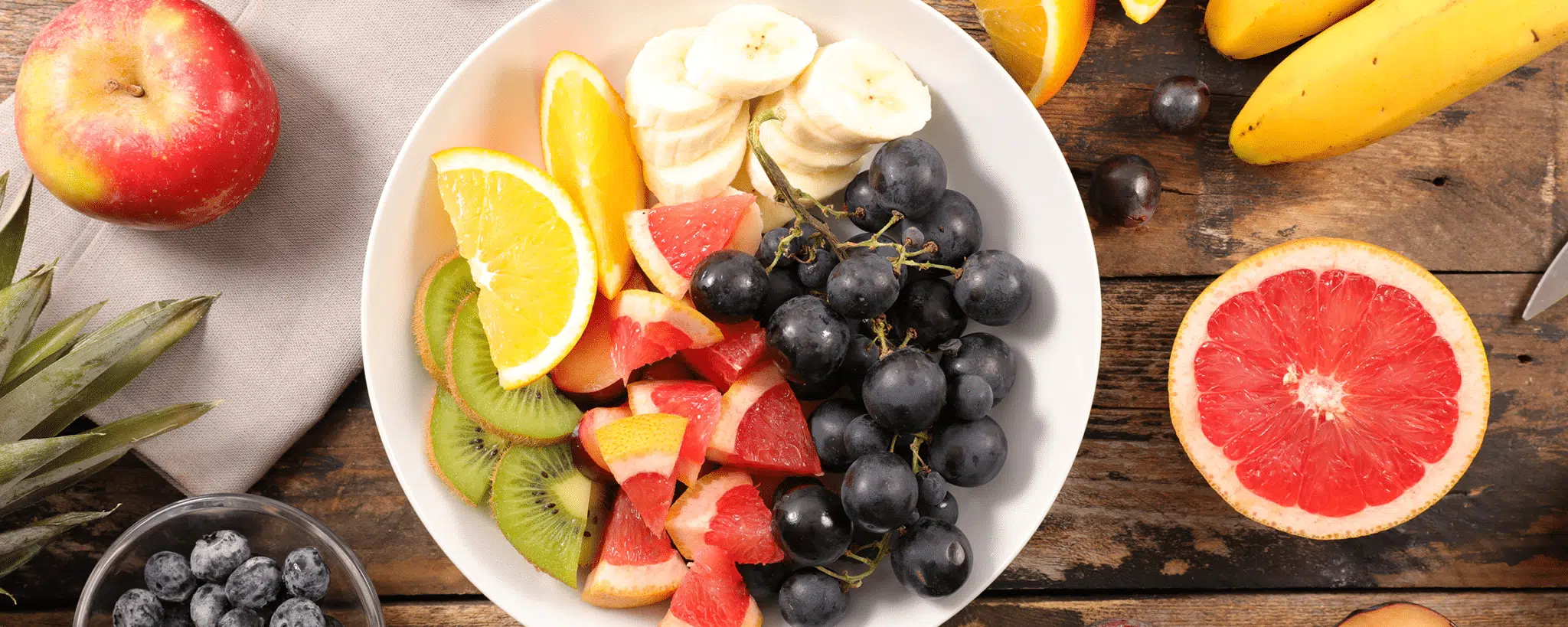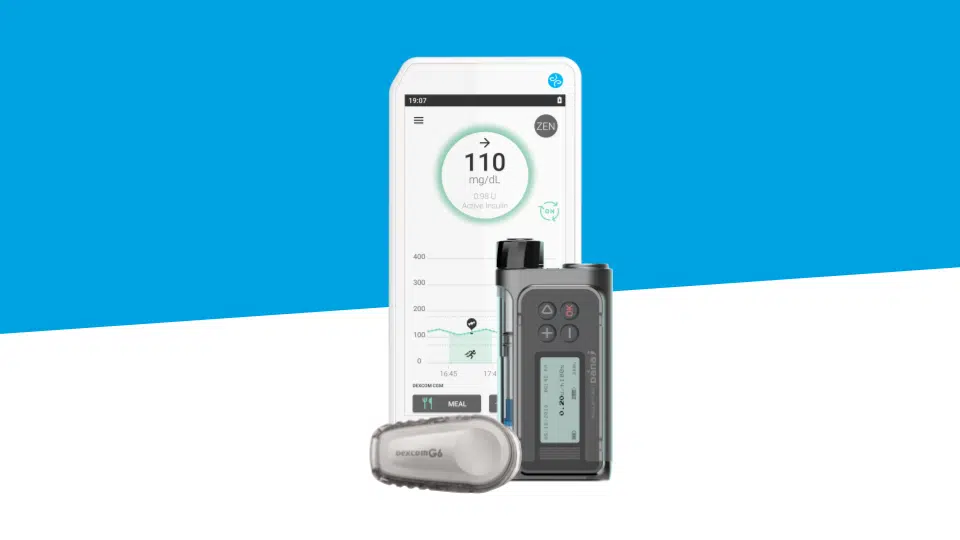
How To Read And Understand Nutritional Labels
Besides the ingredient list, nutritional labels tell us about the composition of the food that we might buy, and then eat. This means products can be compared, and you can gain better control over your diet.
When you’re living with diabetes, it’s recommended that you pay close attention to nutritional values (particularly sugar content, but not just that…) as they impact your blood sugar levels and will help, when needed, to adjust insulin doses.
Math, math, and more math… With the tips we’re going to share with you, you’ll be an ace at decoding the nutritional labels of your favorite products!
Which Carbohydrates Should I Be Looking At?
When you have diabetes, the first lines to look at are the ones for carbohydrates and sugars. You’ll see, there can be some subtle differences. Why make it simple when it can be complicated?
- The “carbohydrates” line refers to all carbohydrates, including simple carbohydrates (or quick-release sugars) and complex carbohydrates (or slow-release sugars);
- The “of which sugars” line refers exclusively to simple carbohydrates, whether they’re natural or added (fructose, saccharine, etc.).
Fancy a high-sugar product while also avoiding a spike in your blood sugars? Like a lot of things, it’s rarely all black or white, so yes, there’s a little trick to help. It is recommended that you combine sugars with fibers that will allow you to absorb sugars more slowly and therefore slow down the blood sugar spike. It’s not a miracle, but it can help!
Be careful, as the higher the value in the “of which sugars” line, the more likely it is that there are added sugars. In the opposite sense, the lower the value in this line, the lower the glycemic index.
For a cookie, the “carbohydrates” line contains the white flour content, which is important to take into account when calculating the amount of insulin to administer.
For a “sugar-free” drink or sweet, owing its sweet taste to polyol, the carbohydrate line will show a high figure, but the sugar line will be 0, and the polyols will be on a separate line.
So, referring to the carbohydrate and sugar quantities is great, but not the only things to look at… You also need to look at the list of ingredients, listed in descending order, which means the main ingredients are at the start.
Read more: « Low-Sugar », « Light », « Zero » Products, No Added Sugars… What’s What?
Sugar-Free Product Labels In Practice
Unsweetened Chocolate Powder
| Per 100 g | 1 serving of 15 g, or 2 tablespoons | |
| Energy | 1516 kJ
366 kcal |
228 kJ
55 kcal |
| Fat Saturated fat |
21 g
13 g |
3.1 g
1.9 g |
| Carbohydrates
Of which sugars |
8.7 g
0.5 g |
1.3 g
0.1 g |
| Protein | 20 g | 3 g |
| Salt | 0.08 g | 0.01 g |
Note: Here, we can see that the product, although low in sugar, contains more slow-release sugars than quick-release sugars.
Sugar-Free Orange Sweets
| Per 100 g | For 1 sweet = 2.5 g | |
| Energie | 238 kcal | 5.95 kcal |
| Fat | 0 g | 0 g |
| Carbohydrates
Of which sugars Of which polyols |
96 g
0 g 96 g |
2.4 g
0 g 2.4 g |
| Protein | 0 g | 0 g |
| Salt | 0 g | 0 g |
Note:This sweet doesn’t contain any simple sugars. It gets its sweet taste from polyols, a low-calorie sweetener.
Unsweetened Grenadine Syrup
| Per 100 ml | 3 ml (average 1 part syrup to 7 parts water) | |
| Energy | 2 kcal | 0.6 kcal |
| Fat | 0 g | 0 g |
| Carbohydrates
Of which sugars |
0.5 g 0.5 g |
0.15 g 0.15 g |
| Protein | 0 g | 0 g |
| Salt | 0.01 g | 0 g |
Note:This product contains very little sugar, composed solely of simple sugars.
3-Grain Wholewheat Bread
| Pour 100 g | For 1 slice = 71 g | |
| Energy | 824 kcal | 585 kcal |
| Fat | 2.9 g | 2 g |
| Carbohydrates
Of which sugars |
32 g
2 g |
23 g
1.4 g |
| Protein | 5 g | 3;55 g |
| Salt | 1.1 g | 0.8 g |
Note: Here, we can see that the simple sugars only account for a small part of the carbohydrates and, given this, the flours and starches are accounted for in the overall carbohydrates.
Orange Soda
| Per 100 ml | 1 glass = 250 ml | |
| Energy | 0.3 kcal | 0.25 kcal |
| Fat | 0 g | 0 g |
| Carbohydrates
Of which sugars |
0 g 0 g |
0 g 0 g |
| Protein | 0 g | 0 g |
| Salt | 0 g | 0 g |
Comparison With The Nutritional Label Of A Sweetened Product
Sweetened Cereal
| Per 100 g | Per 30 g serving | |
| Energy | 1588 kJ 375 kcal |
476 kJ
113 kcal |
| Fat | 1.5 g 0.3 g |
0.1 g |
| Carbohydrates
Of which sugars |
79 g
5 g |
24 g
4.5 g |
| Dietary fiber | 4.5 g | 1.4 g |
| Protein | 9 g | 2.7 g |
| Salt | 1 g | 0.3 g |
Note: This cereal contains a significant portion of slow- and quick-release sugars. It also contains fiber which, in much lower quantities than simple carbohydrates, isn’t going to have a huge impact on glycemic spikes.
Read more: Sugar And Diabetes: Natural Substitutes
What About The Rest Of The Nutritional Label?
European regulations require that nutritional labels for products show the quantities, per 100 g or 100 ml, of:
- fat (grams),
- saturated fat (grams),
- carbohydrates (grams),
- of which sugars (grams),
- protein (grams),
- salt (grams).
Sometimes, these values may also be expressed per serving, but it’s not required.
In the United States, labels are slightly different. Quantities are expressed in percentages and based on a serving. They express:
- The calories and calories from fats,
- Total fat,
- Saturated fat,
- Trans fat,
- Cholesterol,
- Sodium,
- Total carbohydrates and sugars,
- Dietary fiber,
- Protein,
- Vitamins A and C,
- Calcium,
- Iron.
So, you need to check the product’s list of ingredients.
The secrets of names and nutritional labels have been revealed. Now, it’s up to you to choose which light or sugar-free products will satisfy your tastebuds without worrying about your blood sugar levels or your insulin dosage.







